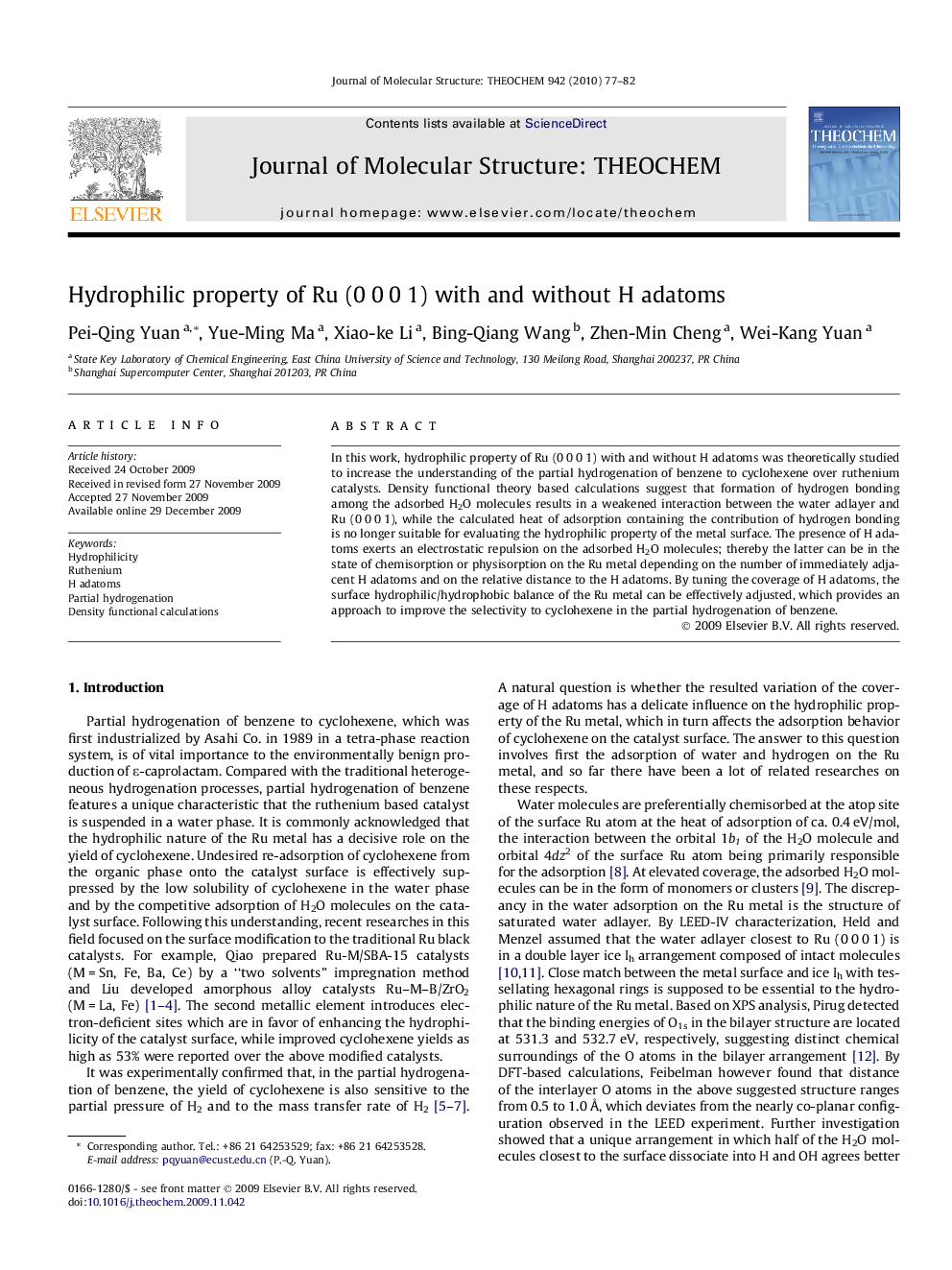| Article ID | Journal | Published Year | Pages | File Type |
|---|---|---|---|---|
| 5416634 | Journal of Molecular Structure: THEOCHEM | 2010 | 6 Pages |
Abstract
In this work, hydrophilic property of Ru (0Â 0Â 0Â 1) with and without H adatoms was theoretically studied to increase the understanding of the partial hydrogenation of benzene to cyclohexene over ruthenium catalysts. Density functional theory based calculations suggest that formation of hydrogen bonding among the adsorbed H2O molecules results in a weakened interaction between the water adlayer and Ru (0Â 0Â 0Â 1), while the calculated heat of adsorption containing the contribution of hydrogen bonding is no longer suitable for evaluating the hydrophilic property of the metal surface. The presence of H adatoms exerts an electrostatic repulsion on the adsorbed H2O molecules; thereby the latter can be in the state of chemisorption or physisorption on the Ru metal depending on the number of immediately adjacent H adatoms and on the relative distance to the H adatoms. By tuning the coverage of H adatoms, the surface hydrophilic/hydrophobic balance of the Ru metal can be effectively adjusted, which provides an approach to improve the selectivity to cyclohexene in the partial hydrogenation of benzene.
Related Topics
Physical Sciences and Engineering
Chemistry
Physical and Theoretical Chemistry
Authors
Pei-Qing Yuan, Yue-Ming Ma, Xiao-ke Li, Bing-Qiang Wang, Zhen-Min Cheng, Wei-Kang Yuan,
